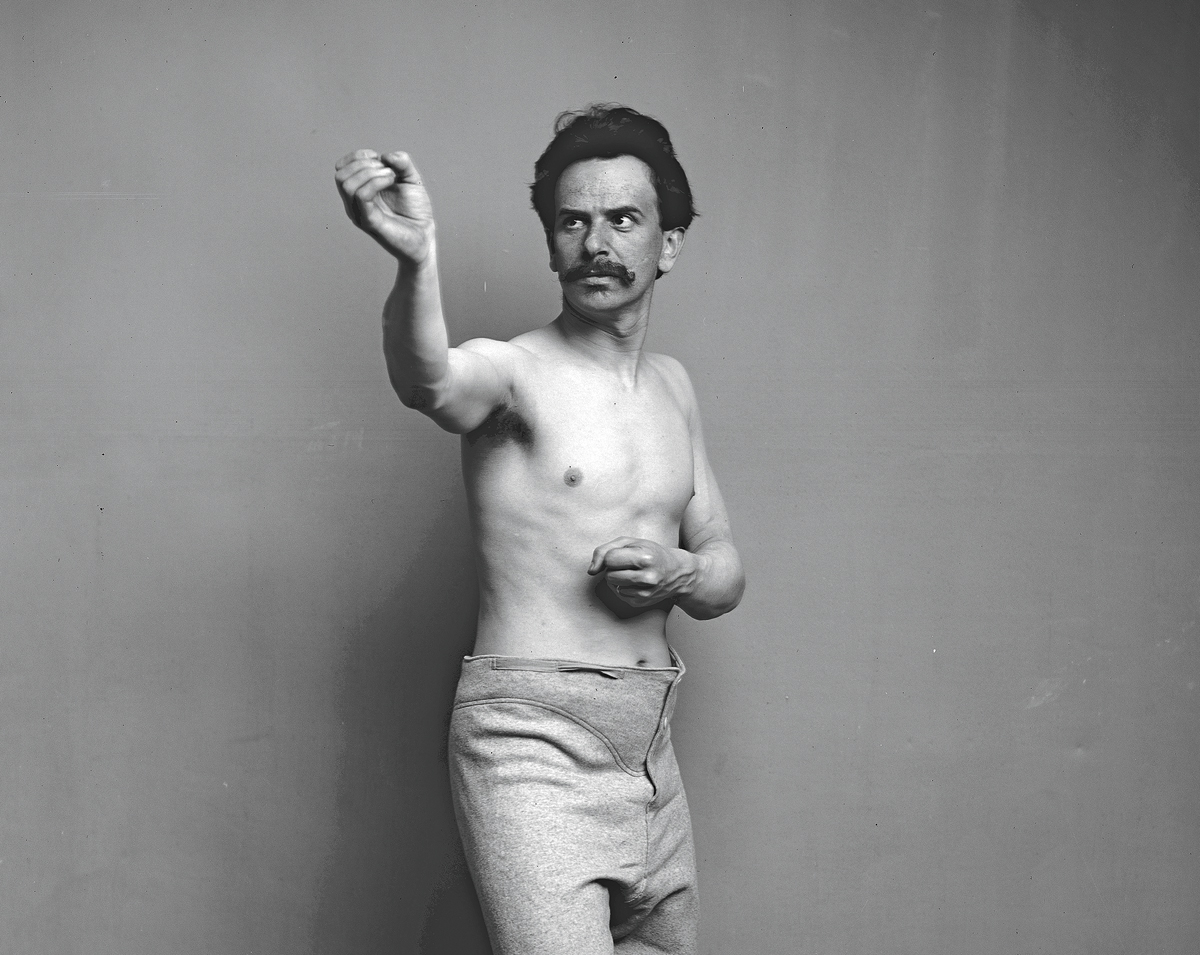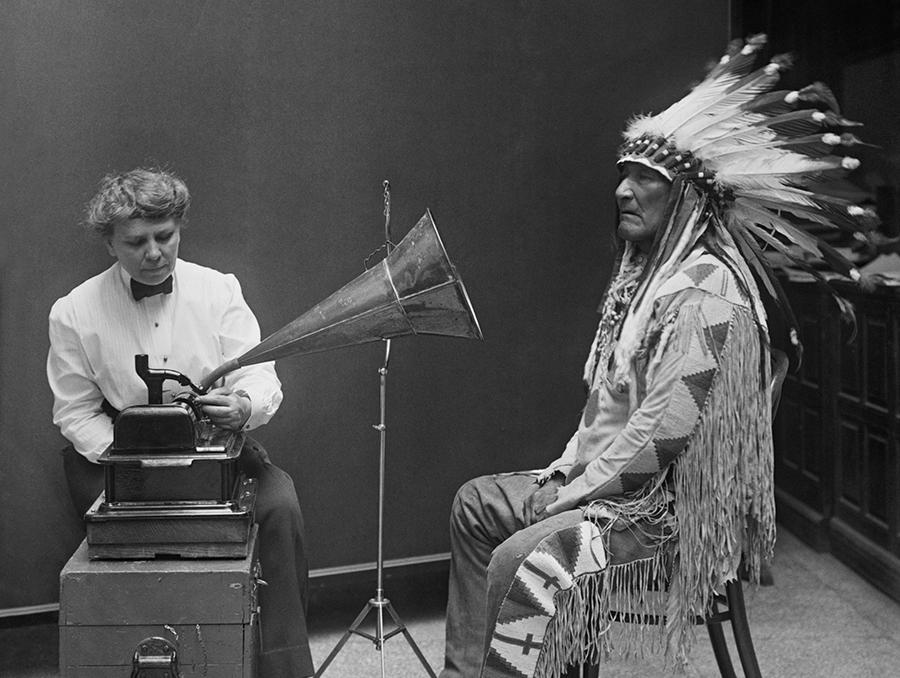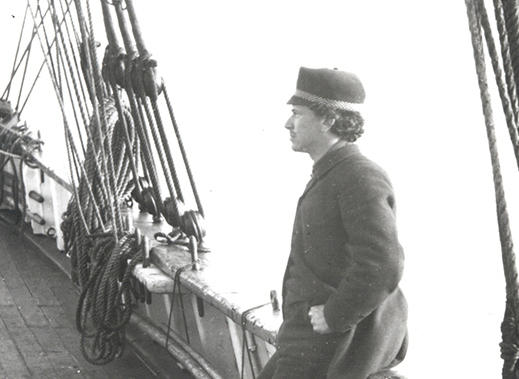
A century ago, when people believed that intelligence, empathy, and human potential were determined by race and gender, Franz Boas looked at the data and decided everyone was wrong. In this excerpt from the new book Gods of the Upper Air, Charles King profiles the maverick Columbia professor.
After his appointment at Columbia, Boas’s connections with the American Museum of Natural History began to fade. He had a habit of making himself more respected than liked. His time at the museum had produced new research and exhibitions but also disappointments, professional disagreements, and hurt feelings among his colleagues, who found him confident to a fault, officious, and given to pique. When he formally resigned his curatorship in 1905, no one begged him to stay.
The move to full-time work at the university gave Boas the opportunity to build his own team of researchers. “Neither Berlin with its five anthropological professorships, nor Paris with its anthropological school, nor Holland with its colonial school, could give a proper training to the observers whom we need,” he wrote to a colleague in 1901. He reorganized the department’s coursework to include training in linguistics and ethnology, not just the traditional anthropometry. “With archaeology represented,” he told the university’s president, Nicholas Murray Butler, “we should be able to train anthropologists in all directions.”
Boas had decamped with Marie and the children to a rambling house across the Hudson River in Grantwood, New Jersey. It soon became an informal gathering place for a growing coterie of graduate students. Many were already making names for themselves as well-rounded scholars with knowledge of ethnology, linguistics, archaeology, and physical anthropology, the four distinct fields that Boas had come to see as the foundation of a proper discipline of anthropology. The first of these to complete the doctorate at Columbia, in 1901, was Alfred Kroeber, another member of New York’s German immigrant community. He was soon on his way to California, where he set up the new anthropology department at Berkeley. Robert Lowie, an Austrian émigré and budding expert on the Plains Indians, graduated in 1908 and later joined Kroeber on the West Coast. Edward Sapir, a Jewish immigrant from the Russian Empire, finished his degree under Boas’s direction in 1909 with a dissertation on the languages of the Pacific Northwest. He soon moved to Ottawa to head up the Canadian government’s geological survey. Alexander Goldenweiser and Paul Radin, Jewish immigrants from Kiev and Łódź, finished in 1910 and 1911, with work on anthropological theory and Native American ethnology. “It is gratifying to note that the demand for graduates of the Anthropological Department of Columbia University has always been such that practically all the young men in anthropological museums and colleges are those who have either graduated here or studied a considerable number of years in this Department,” Boas bragged to President Butler.
Within only a few years, however, that early momentum seemed to stall. Butler frowned on teachers’ spending so much time on research rather than in the lecture hall. He informed Boas that no increases in appropriations for anthropology would be made. There was no money for teaching materials. There were too few lecturers to cover all the fields of study. Things were in “a pitiable condition,” Boas wrote to Kroeber at the beginning of 1908, “and … for the time being all our former hopes and aspirations have gone to pieces.” The only solution was to try to find new sources of income, even “a complete change of interests,” he added, which might provide a more stable financial footing for the fieldwork that he hoped to continue.
Boas began sending out letters to virtually any source he could think of, proposing grand research projects that might somehow attract new funding. He contacted his old colleagues at the Bureau of American Ethnology with the idea of creating a handbook of American Indian languages, which he hoped would provide additional travel money for his students and coworkers. In the 1907–08 academic year, he broadened the course offerings, including a new class on “The Negro Problem.” “I am endeavoring to organize certain scientific work on the Negro race which I believe will be of great practical value in modifying the views of our people in regard to the Negro problem,” he told Booker T. Washington. Aware that more bodies in the classroom meant more reason for President Butler to increase the department’s budget, he also pushed to open classes for undergraduates. Then in the spring of 1908, a special new opportunity came Boas’s way that promised to resolve a host of difficulties at once.
A year earlier the US Congress had established a special commission to study the rise in immigration and its practical effects on the United States. Rumors had circulated that foreign governments were willfully sending over criminals and the infirm as a way of ridding themselves of undesirables and, in the process, weakening American society. Chaired by Senator William P. Dillingham, a Vermont Republican, the commissioners eventually included such luminaries as Henry Cabot Lodge, a Massachusetts Republican and immigration opponent, and LeRoy Percy, a Mississippi Democrat and prominent Delta planter. Decked out in straw boaters and linen suits, this distinguished group of commissioners set out on a steamship journey to Naples, Marseilles, and Hamburg, among other European ports. There they found squalid detention camps full of Italians, Greeks, and Syrians, all willing to pay unscrupulous captains whatever they might charge for passage across the Atlantic. They uncovered no evidence of a conspiracy to dilute the “great race,” as Madison Grant would soon term it. Still, when they returned, they decided to organize a series of working groups to study the overall problem of immigration, assemble statistical data, and issue detailed recommendations toward creating a more rational policy for dealing with the waves of foreigners now crashing on American shores.
In March 1908 the commission contacted Boas with the idea of preparing a report on “the immigration of different races into this country” and asked what thoughts he might have on how it could be carried out. Boas wasted no time in responding. He proposed to examine physical changes among immigrants who had recently arrived in the United States. After all, if immigration was in fact having an effect on American society, its clearest results were likely to be seen in the bodies of the newest Americans: the immigrants’ children. Were they assimilating to some common American type? Or were the hereditary traits common to the several races of Europe so powerful that they would survive across time and distance, to be passed on to children who were the products of marriage across racial or ethnic lines? Might those conserved traits, the vestiges of ancient races and subraces, throw up natural barriers to what was being called America’s “melting pot” ideal?
“The importance of this question can hardly be overestimated,” Boas wrote to the commission staff, “and the development of modern anthropological methods makes it perfectly feasible to give a definite answer to the problem that presents itself to us.” He proposed a budget of nearly $20,000, which would pay for a team of observers to measure heads, take family histories, and compile the gargantuan statistical data set that would be required to answer the questions he had posed. “I believe I can assure you that the practical results of this investigation will be important in so far as they will settle once and for all the question of whether the immigrants from southern Europe and from eastern Europe are and can be assimilated by our people.” The commission balked at the price tag but agreed to fund the preliminary study. That fall the government agreed to expand the work into a full-scale research project.
Boas’s graduate students, Columbia colleagues, and hired assistants soon fanned out across the city. They lugged along many of the same measuring devices Boas had used at the Chicago world’s fair, plus a set of glass marbles specially crafted by a New York optician for comparing eye color. They measured the heads of the students in Jewish schools on the Lower East Side. They distributed questionnaires to Italian families in Chatham Square and Yonkers. They queried Bohemians in their neighborhoods on the East Side, between Third and First Avenues and East 70th and 84th Streets. They chased down Hungarians, Poles, and Slovaks in Brooklyn. They stood on the docks at Ellis Island, calipers and eye-color meters in hand, as people waited for medical inspections. At reform schools and juvenile asylums, at parochial and private schools, at the Young Men’s Hebrew Association and the YMCA, some 17,821 people subjected themselves to Boas’s scales and measuring tapes. Nothing like it had ever been attempted before, certainly not under the auspices of an official government commission whose charge was to understand precisely how immigrants were affecting the literal body politic of their new country. In the spring of 1910, Boas wrote to colleagues at the Bureau of American Ethnology to tell them that his work was producing “entirely unexpected results, and [makes] the whole problem appear in an entirely new light.”
After countless hours of data collection, analysis, and write-up, the conclusions were finally published in 1911 as Changes in Bodily Form of Descendants of Immigrants, part of the Dillingham Commission’s official record. Boas expressed his main conclusion in a simple sentence on the second page: “The adaptability of the immigrant seems to be very much greater than we had a right to suppose before our investigations were instituted.” Children born in the United States had more in common with other US-born children than with the national group — or race, as Grant would have termed it — represented by their parents. Round-headed Jews became long-headed ones. The long heads of Sicilians compressed into shorter heads. The wide faces of Neapolitans narrowed to match those of the immigrants by whom they were surrounded, not those of their racial brethren in the old country. There was, in other words, no such thing — in purely physical terms — as a “Jew,” a “Pole,” or a “Slovak,” if one judged by the bodies of the children of first-generation immigrants. The conditions of life, from diet to environment, were having a quick and measurable effect on head forms that were thought to be fixed, inheritable, and indicative of one’s essential type.
Races were unstable, Boas concluded. And if they didn’t exist as physical realities in our present moment, then neither could they have existed in the past — which meant in turn that any history of humanity that presented itself as a battle royale of races was essentially false. If there was no physical permanence to the concept of race, at least as it had been popularly defined, then there could be no clustering of other traits around it, such as intelligence, physical ability, collective fitness, or aptitude for civilizational advancement. “These results are so definite that, while heretofore we had the right to assume that human types are stable,” he wrote, “all the evidence is now in favor of a great plasticity of human types, and the permanence of types in new surroundings appears rather as the exception than as the rule.”
Boas had been working up to this conclusion since his days on Baffin Island, but he now had more than simple intuition to back up his claims. He had data, masses of it, all pointing toward a revolutionary — and to many, discomfiting — conclusion: that the “peoples” he had been helping to document in museums and exhibitions since his own immigration to the United States were not natural varieties of humankind. There was no reason to believe that a person of one racial or national category was more of a drain on society, more prone to criminality, or more difficult to assimilate than any other. What people did, rather than who they were, ought to be the starting point for a legitimate science of society and, by extension, the basis for government policy on immigration.
From the book Gods of the Upper Air, by Charles King, published by Doubleday Books, an imprint of the Knopf Doubleday Publishing Group, a division of Penguin Random House LLC. © 2019 by Charles King. This article appears in the Winter 2019-20 print edition of Columbia Magazine with the title "In Defense of Humankind."




